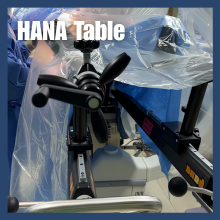Cervical Artificial Disc Replacement: A Procedure for Neck Pain Relief
Cervical artificial disc replacement is a surgical procedure that replaces a damaged or diseased disc in the neck with a stainless steel device that maintains motion. The device has two components: a ball on top and a trough on the bottom, and it is inserted into the disc space and attached to the vertebral bodies on both sides. This procedure is typically recommended for patients who have severe stenosis with spinal cord injury, severe facet arthritis, cervical kyphosis, or primary bone pathology such as infection.
Disc Replacement Procedure Overview
The cervical artificial disc replacement procedure involves making an incision in the neck, removing the damaged disc, shaping the disc space, and implanting the device. The implant is designed to preserve motion in the spine and keep the cervical spine properly aligned. After the surgery, patients usually stay in the hospital for 24 to 48 hours and have minimal movement limitations. Risks of the surgery include early or late loosening of the components, anatomical or technical difficulties, and component sizing issues.
Artificial Disc Surgery: Pre-Op and Post-Op
It is important to consult with a physician to determine if this procedure is right for you. The physician will consider the symptoms, diagnosis, and anatomy of the neck to determine if this procedure is needed. After the procedure, patients usually recover well and have minimal movement limitations. However, it is important to be aware of the possible risks, such as early or late loosening of the components, anatomical or technical difficulties, and component sizing issues.
Related Information:
- Spinal Disc Replacement Research Highlights
- Artificial Disc Replacement for Degenerative Disc Disease
- How long do joint replacements last?
For The Latest Spinal Disc Replacement Information
The Bone and Joint Institute of Tennessee’s spine specialists offer personalized surgical and non-surgical treatment for neck and back problems. Whether you’re suffering from trauma, injury, arthritis or other orthopaedic condition, our experts will help relieve pain and restore mobility. We offer the most up-to-date surgical care for spinal conditions, including total disc replacement and minimally invasive spinal surgery. It’s important to note that not all spinal problems require surgery, and we recognize that every patient is different. That’s why our specialists seek out the least invasive and most effective treatment option for each patient. Physical therapy and rehabilitation are also essential elements of spinal care, and we have an experienced team of medical professionals armed with the latest recommendations and tools to help promote healing. For more information or to schedule an appointment, call 615-791-2630.
Bone And Joint Institute Of Tennessee Spine Specialists

Additional Educational Videos:
- Cervical Arthroplasty Procedure
- Anterior Cervical Discectomy and Fusion Procedure
- Anterior Lumbar Interbody Fusion Procedure
- Lumbar Microdiscectomy Procedure
- Posterior Lumbar Interbody Fusion Procedure
- Lateral Lumbar Interbody Fusion Procedure
- Laminectomy and Fusion Procedure



.png)




